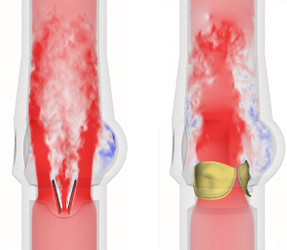Congratulations to Drs. Fuhui Fang and Mike Lee!
Congratulations to Fuhui Fang and Mike Lee for successfully completing their PhDs.
Fuhui’s thesis is on Numerical Advances for Fluid-Structure Interactions in Entangled Polymer Solutions with Applications to Active Microbead Rheology. Fuhui will be starting a position at Microsoft in the Fall.
Mike’s thesis is on Simulating In Vitro Models of Cardiovascular Fluid-Structure Interaction: Methods, Models, and Applications. Mike is off to a postdoctoral position at Johns Hopkins in the Department of Mechanical Engineering and Institute for Computational Medicine.
Good luck, Fuhui and Mike!
